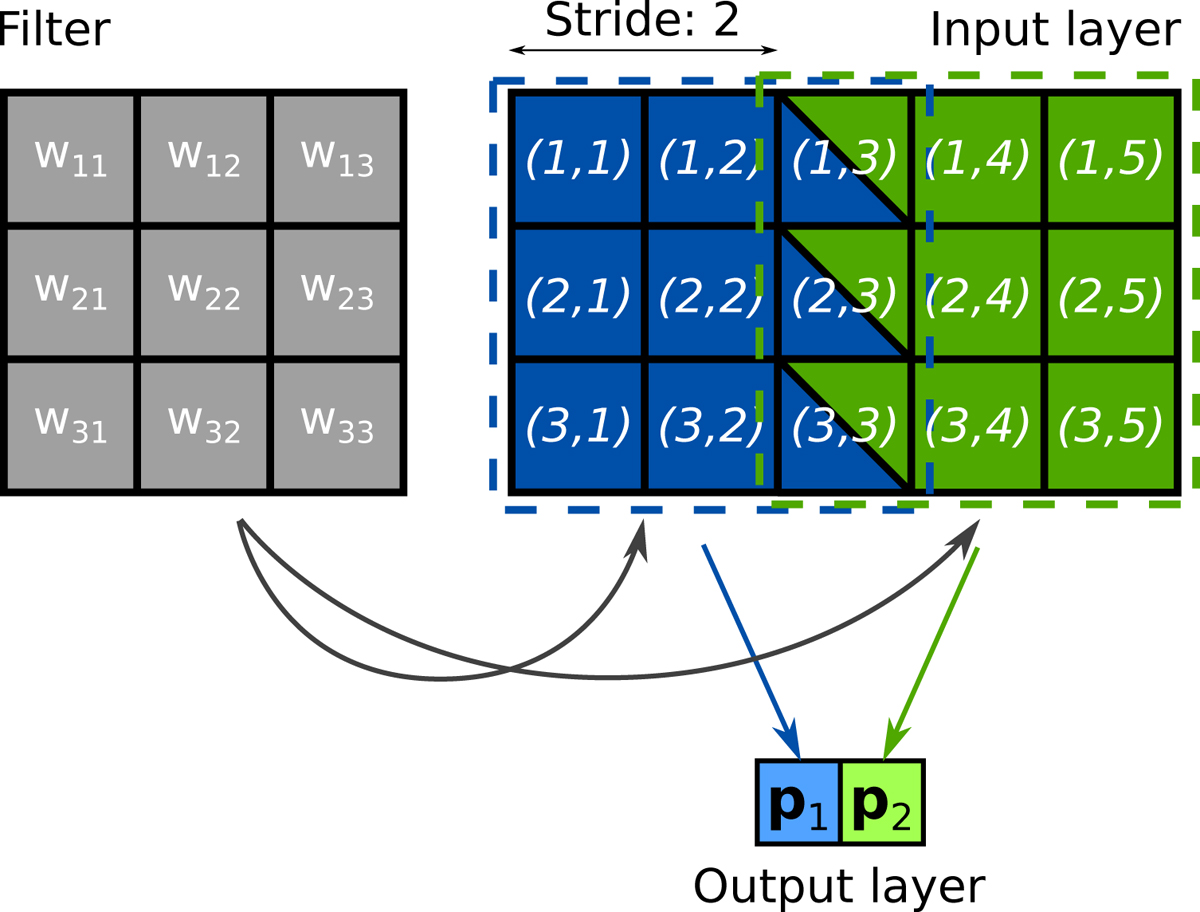Fig. 1.

Application of CNN convolutional filter to 2D image. The input image (shown as a colored matrix) contains 3 × 5 pixels, while the convolutional filter (in gray) is a 3 × 3 matrix. The filter moves across the input image and each time a dot product between the filter and the sub 3 × 3 portion of the image is performed. The result of the product is stored in the output. In this example the filter is not applied to all the possible 3 × 3 partitions of the input image but jumps one pixel at every move (the way the filter moves across the image is controlled by the stride parameter, which in this case is equal to 2 as the filter is translated by two pixels at every move). The filter elements wij represent the weights of the network which are optimized during training, and do not change while the filter moves. In this example, the value of each pixel in the output layer is the result of the dot product between the filter and the image pixels in the two squares centered on (2, 2) and (2, 4).
Current usage metrics show cumulative count of Article Views (full-text article views including HTML views, PDF and ePub downloads, according to the available data) and Abstracts Views on Vision4Press platform.
Data correspond to usage on the plateform after 2015. The current usage metrics is available 48-96 hours after online publication and is updated daily on week days.
Initial download of the metrics may take a while.


